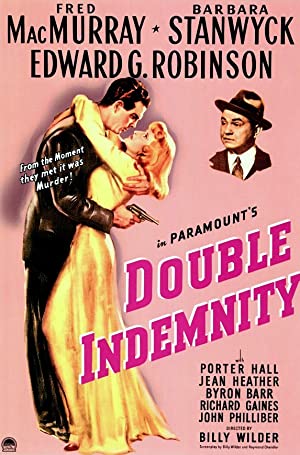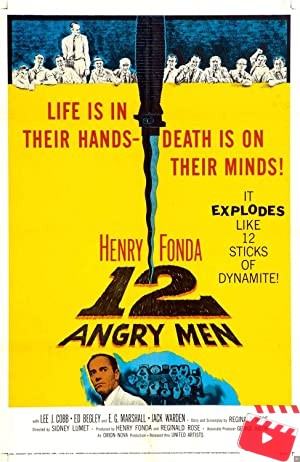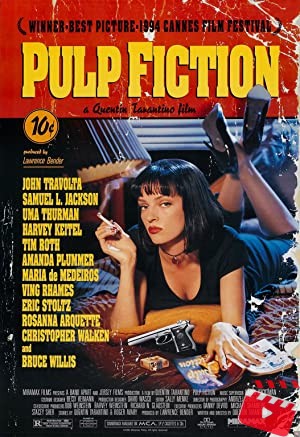
Double Indemnity is a classic film noir from 1944 that has stood the test of time. If you’re a fan of dark and twisted movies with suspenseful plots, this is a must-watch.
The movie follows the story of Walter Neff, an insurance salesman, and Phyllis Dietrichson, a seductive woman who convinces Neff to help her commit murder for insurance money. The two start a dangerous affair that leads to unexpected twists and turns, ultimately leading to their downfall.
The film is excellently crafted with stunning cinematography and strong performances from its leads, Fred MacMurray and Barbara Stanwyck. The chemistry between the two actors is palpable, making their interactions on-screen all the more intense.
Aside from the main characters, the supporting cast is also noteworthy. Edward G. Robinson delivers a standout performance as Barton Keyes, the insurance investigator who becomes suspicious of Neff and Dietrichson’s scheme. Robinson’s character brings a level of humor to the otherwise dark film, making the audience feel for him as he pieces together the murder.
The movie’s plot is full of surprises and will keep you on the edge of your seat until the very end. The script is expertly written, with witty dialogue and subtle jabs at societal norms of the time.
Overall, Double Indemnity is a classic that deserves its reputation as one of the best film noirs. It’s a well-crafted tale of murder, lust, and betrayal that is expertly presented by all involved. If you haven’t seen it yet, it’s definitely worth a watch. You won’t be disappointed.
Lesson about Double Indemnity
Double Indemnity teaches us about the consequences of greed and the danger of succumbing to temptation.
The Best of Double Indemnity
- 1) The strong performances of the lead actors – Double Indemnity showcases the talents of Barbara Stanwyck and Fred MacMurray, who give convincing performances as a femme fatale and insurance salesman respectively. Their chemistry and screen presence elevate the film and make it a classic.
- 2) The gritty noir atmosphere – Billy Wilder‘s direction and John Seitz’s cinematography create a moody, shadowy world that oozes with a sense of danger and suspense. The film depicts Los Angeles as a city full of dark corners where anything can happen, and this ominous tone helps to draw viewers in and keep them on the edge of their seats.
- 3) The engaging and twisty plot – Double Indemnity is a masterclass in noir storytelling, packed with twists and turns that keep viewers guessing until the very end. The film’s script, co-written by Wilder and Raymond Chandler, is clever and complex, while the inventive framing device of having the protagonist narrate the story from beyond the grave adds an extra layer of intrigue.
Week points of Double Indemnity
- 1. Simplistic Plot: Despite being a classic film noir, the plot of Double Indemnity is somewhat simplistic, lacking in the complexity and intricacy of modern crime thrillers. The story is predictable, with several foregone conclusions that sap the tension out of the narrative.
- 2. Stereotypical Characters: Many of the characters in Double Indemnity fall into the classic archetypes of film noir, including the femme fatale, the hapless victim, and the corrupt cop. While these are hallmarks of the genre, they can sometimes feel predictable and clichéd, making it difficult for viewers to engage with the characters on a deeper level.
- 3. Dated Production: As a film from the 1940s, Double Indemnity suffers from production values that may feel outdated to contemporary viewers. The set design, lighting, and camera work all feel old-fashioned, which can be a hindrance to modern audiences. Additionally, the acting can sometimes feel stilted or overly theatrical, which can take away from the realism of the story.
Technical details of Double Indemnity
| Title | Double Indemnity |
|---|---|
| Year | 1944 |
| Rated | Passed |
| Released | 06 Jul 1944 |
| Runtime | 107 min |
| Genre | Crime, Drama, Film-Noir |
| Director | Billy Wilder |
| Writer | Billy Wilder, Raymond Chandler, James M. Cain |
| Actors | Fred MacMurray, Barbara Stanwyck, Edward G. Robinson |
| Plot | In 1938, Walter Neff, an experienced salesman of the Pacific All Risk Insurance Co., meets the seductive wife of one of his clients, Phyllis Dietrichson, and they have an affair. Phyllis proposes to kill her husband to receive the proceeds of an accident insurance policy and Walter devises a scheme to receive twice the amount based on a double indemnity clause. When Mr. Dietrichson is found dead on a train track, the police accept the determination of accidental death. However, the insurance analyst and Walter's best friend Barton Keyes does not buy the story and suspects that Phyllis has murdered her husband with the help of another man. |
| Country | United States |
| Awards | Nominated for 7 Oscars. 2 wins & 9 nominations total |










